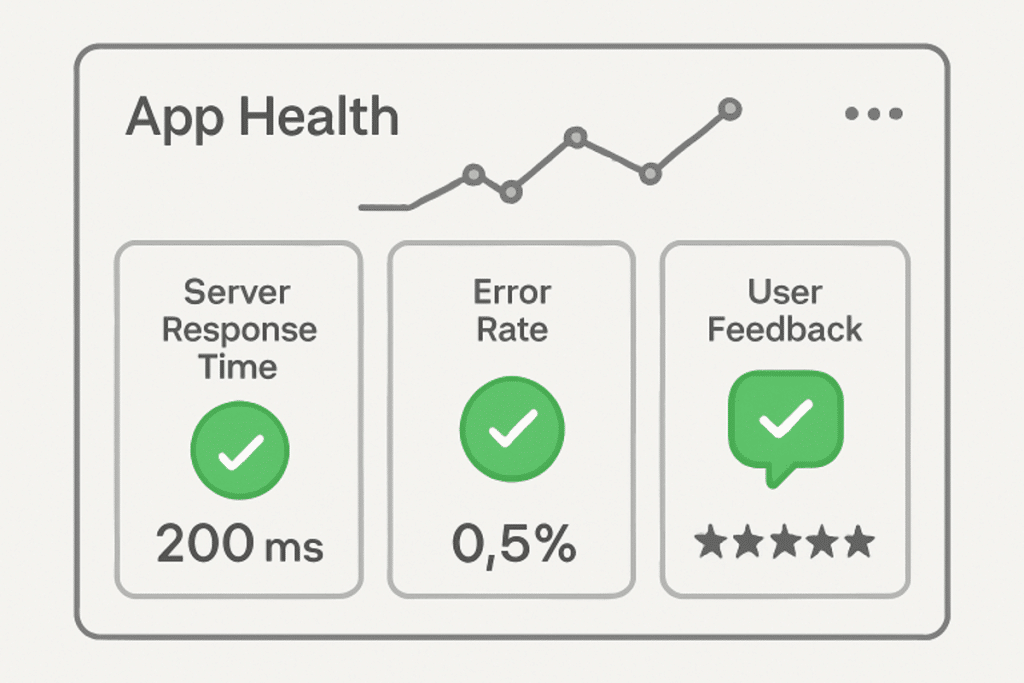In today’s highly competitive digital environment, ensuring your applications’ ongoing health and performance is no longer optional—it’s a business imperative. Modern users expect fast, reliable, and seamless digital experiences when interacting with an app. Failing to meet these expectations can quickly damage your brand reputation and threaten customer loyalty. This means teams must go beyond basic maintenance and embrace a proactive, comprehensive strategy for application health. By leveraging robust application performance monitoring tools and adopting a mindset of continuous vigilance, businesses can swiftly identify potential threats, improve resilience, and keep user satisfaction at the forefront of every decision. The result is an adaptable application that meets current needs and is well-positioned to evolve as user demands and market trends change.
Utilizing advanced monitoring brings hidden performance bottlenecks and inefficiencies to light and allows teams to make informed decisions about scaling and resource allocation. This foresight enhances capacity planning, ensures reliability, and minimizes downtime. More importantly, monitoring lays the foundation for a comprehensive proactive support model—helping organizations anticipate and address issues before they escalate to user-facing problems. Over time, this systematic approach fosters a stable ecosystem, improves customer confidence, and ensures long-term operational excellence.
Regular Health Checks
Regular health checks consistently form the foundation of a resilient and high-performing application environment. These health checks are far more than a one-time task—they must be integral to ongoing operations. By repeatedly assessing critical aspects of application performance, organizations can catch minor anomalies or emerging weaknesses before they snowball into critical outages or systemic failures. A comprehensive health assessment includes several elements:
- Analyzing performance metrics: Regularly track detailed analytics such as server response times, load balancing efficiency, error and crash rates, and database query speeds. This quantitative data helps quickly pinpoint inefficient code blocks, latency-inducing infrastructure components, or overloaded resources, which can threaten user experience if left unchecked.
- Reviewing user feedback: Mining data from support tickets, app store reviews, and in-app feedback provides an unfiltered look at users’ experiences. By identifying common pain points or feature requests, you can prioritize improvements that impact satisfaction and retention rates.
- Ensuring security compliance: Given the increasing focus on data protection and regulatory requirements, it is crucial to audit your application for vulnerabilities routinely. This means catching potential security loopholes and confirming adherence to the latest compliance and privacy standards.
Systematic and routine health evaluations allow for fast and effective remediation, preventing minor issues from compounding into larger disruptions that can impact internal workflows and external user relations. For actionable steps and a ready-made checklist to guide your process, refer to this 10-step app health check guide.

Proactive Support Strategies
While responding swiftly to incidents remains essential, the true hallmark of application health is preventing such incidents in the first place. Proactive support is about taking preventive measures to address risks well before they erupt into user-facing problems. This forward-thinking approach ignites higher user satisfaction, reduces long-term support costs, and streamlines IT operations. Some tried-and-true methods to build a proactive support framework include:
- Continuous monitoring: Implement always-on, automated monitoring that instantly detects abnormal spikes in traffic, memory, or CPU utilization, and any deviation from expected performance baselines. Tools with smart alerting not only flag anomalies as they occur but can also provide historical trend insights, enabling informed decisions about resource scaling and response tactics.
- User notifications: Clear, timely communication is key to maintaining user trust. Notify users proactively of scheduled maintenance, feature rollouts, or upcoming downtime using in-app messages or targeted emails. Transparency reduces confusion and pre-empts frustration during planned changes.
- Self-service support: Equip users with extensive knowledge bases, interactive FAQs, troubleshooting guides, and helpful video content. Empowering users resolves common issues quickly and efficiently, which lightens the support team’s burden and yields a more positive overall experience.
Leading organizations like AWS exemplify proactive support by using advanced analytics and real-time monitoring to maintain superior service reliability. These predictive tools notify customers about potential issues before they escalate, allowing for timely intervention.
Continuous Improvement
Change is the only constant in the digital world—user expectations, security risks, and tech trends are in perpetual motion. A culture of continuous improvement ensures your application evolves as rapidly as the ecosystem around it. Organizations committed to ongoing growth need deliberate processes for adaptation:
- Regular updates: Establish a cadence of releasing patches, fixing bugs, and rolling out performance enhancements. This keeps your app competitive and mitigates risks associated with outdated components and known vulnerabilities.
- User-centric development: Gather, assess, and prioritize user insights to shape the product roadmap. By listening intently to your users, you can anticipate needs and address frustrations before they lead to churn.
- Upskilling teams: Foster a learning-centric culture where development, operations, and IT staff are encouraged to upgrade their skills. Supporting ongoing professional development helps your team stay ahead of best practices and emerging technology, thus strengthening the foundation of your application’s health.
Iterative enhancements not only future-proof your application—they also set the stage for delighting users through innovation, improvement, and reliability. This process cements your brand’s reputation as responsive and forward-looking, earning long-term loyalty and market advantage.
Leveraging Technology
Technology is the great enabler for proactive application health. Modern tools allow organizations to automate repetitive, error-prone tasks, efficiently scale with user demand, and gain real-time insights into the entire application ecosystem. Some of the most impactful pillars for driving robust application health through technology are:
- Automated testing: Adopt continuous integration and continuous deployment (CI/CD) pipelines with built-in automated testing. Before they reach production environments, early detection of bugs and regressions dramatically reduces deployment risk and speeds up innovation cycles.
- Performance monitoring solutions: Sophisticated real-time monitoring suites can visualize infrastructure, application, and user transaction layers simultaneously. These tools aggregate data, locate root causes of performance degradation, and provide actionable intelligence for rapid resolution and performance tuning.
- Cloud-based scalability: Cloud-native architectures enable immediate and flexible resource allocation that matches usage peaks and valleys dynamically. This prevents resource exhaustion, reduces outage risk, and keeps performance consistent—no matter how the user base grows.
Innovative projects, such as EY’s Care Coordination app, demonstrate the transformative power of technology for proactive prevention. By leveraging data analytics and automation, they have drastically improved patient outcomes by reducing unnecessary hospitalizations and readmission rates.
Conclusion
Delivering high-performing, resilient applications in an always-on digital landscape requires much more than periodic troubleshooting. Robust application health is a living process that integrates routine health checks, proactive support strategies, continuous improvement, and cutting-edge technology adoption. Organizations committed to these practices are well-equipped to surpass user expectations, secure their systems, and adapt to the fast-evolving landscape. By championing a proactive approach and drawing on the power of application performance monitoring solutions, you’ll safeguard your reputation and bottom line—positioning your app as a leader in today’s ever-demanding digital marketplace.
